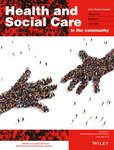The symbolic representation of community in social isolation and loneliness among older people: Insights for intervention from a rural Irish case study
Abstract
Social isolation and loneliness are common experiences of ageing in rural communities. Policy responses and interventions for social isolation and loneliness in later life are shaped by sociocultural understandings of place, relationships and social interaction. This study examined how representations of rural community in Ireland influenced the focus, relationships and activities within a befriending intervention designed to tackle social isolation and loneliness. Through a qualitative case study conducted in 2014, the symbolic meaning of the intervention was explored using interviews and focus groups with participants (8 befriended, 11 befrienders and 3 community workers) from one befriending programme in rural Ireland. Reflected in the programme was a representation of a rural community in decline with concern for the impact on older people. There was a valuing of the traditional community defined by geographical place, perceptions of similarity among its members, and values of solidarity and mutual support. The befriending intervention represented a commitment to intra-community solidarity and a desire by many for authentic befriending relationships that mirrored understandings of relationships within the traditional community. Identifying and alleviating social isolation and loneliness imply a set of normative values about community and the optimal social relationships within community. This paper proposes that there is a need to consider the role played by understandings of community in shaping context-sensitive interventions to counter social isolation and loneliness in later life.




